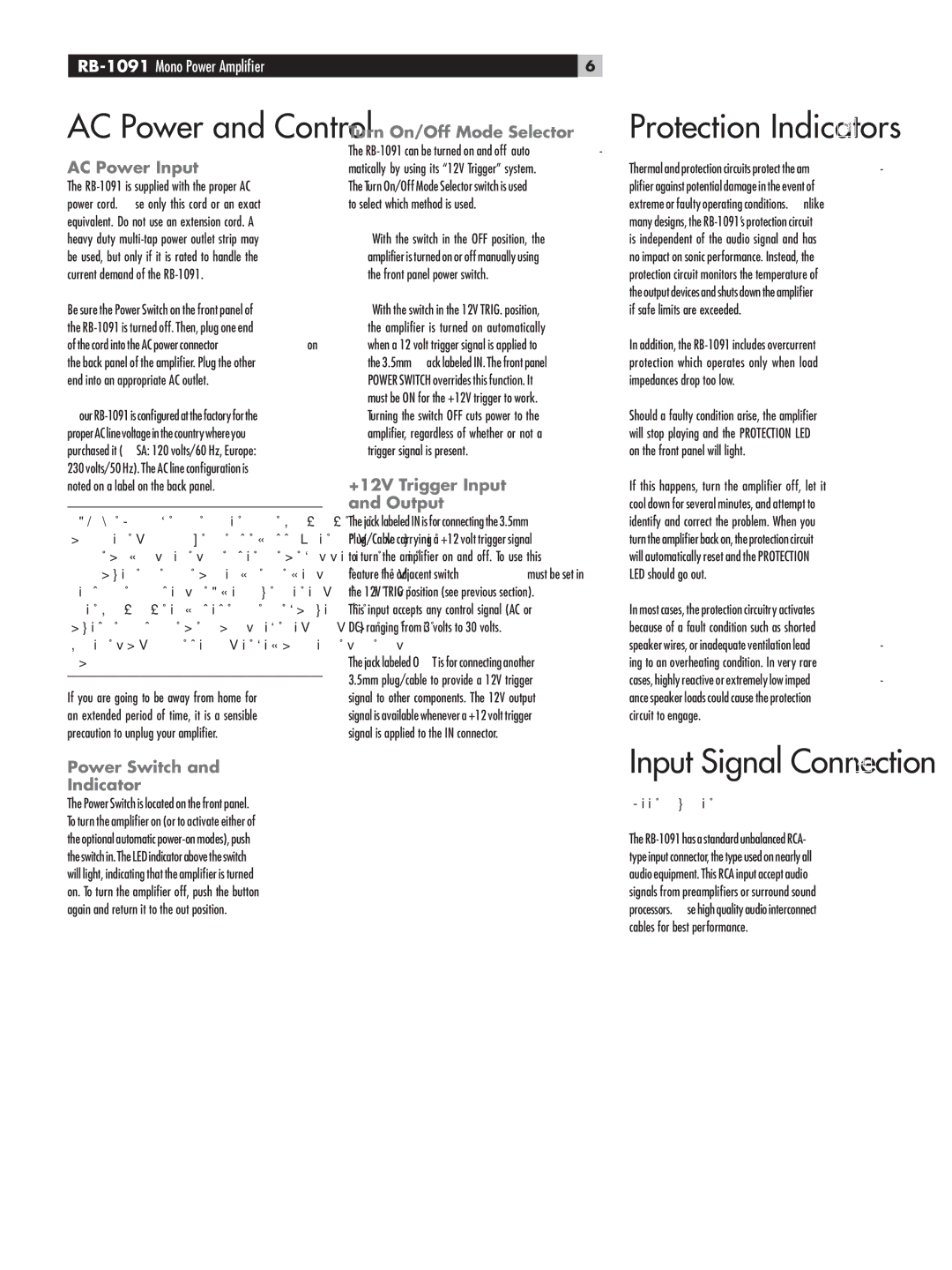RB-1091 specifications
The Rotel RB-1091 is a high-performance power amplifier designed to deliver exceptional sound quality for audiophiles and home theater enthusiasts alike. Renowned for its robust build and exceptional audio fidelity, the RB-1091 is a critical component in a high-end audio system, ensuring that every note is reproduced with clarity and precision.One of the standout features of the RB-1091 is its powerful output capability. It is capable of delivering 200 watts per channel into 8 ohms and 400 watts per channel into 4 ohms, making it suitable for driving a variety of speaker types, including larger floor-standing models. This power provides ample headroom, allowing the amplifier to handle dynamic musical passages without distortion or clipping, ensuring an immersive listening experience.
The RB-1091 utilizes Class AB amplification technology, which combines the efficiency of Class B designs with the linearity of Class A amplifiers. This hybrid approach results in improved sonic performance, with refined details and reduced distortion, noticeable even at higher volumes. The design promotes efficient operation and cooler performance, making it a reliable choice for long listening sessions.
Another key characteristic of the RB-1091 is its dual-mono construction. This design philosophy separates the left and right channels, minimizing crosstalk and allowing for a more cohesive soundstage. By providing dedicated power supplies and amplification stages for each channel, the RB-1091 ensures that audio signals remain isolated and clear, resulting in a more detailed presentation of music and film soundtracks.
To enhance its versatility, the RB-1091 incorporates a variety of inputs, including balanced XLR and unbalanced RCA connections, allowing seamless integration with various preamplifiers and home theater receivers. Additionally, the amplifier features a robust chassis designed to minimize interference and resonance, ensuring that it performs optimally regardless of the listening environment.
In summary, the Rotel RB-1091 stands out in the realm of high-fidelity audio with its potent power output, class-leading amplification technology, and high-quality construction. Whether powering a two-channel stereo setup or integrated into a multi-channel home theater system, the RB-1091's blend of performance and reliability makes it a superb choice for anyone seeking to elevate their audio experience to new heights. With its ability to deliver breathtaking sound with clarity and impact, the RB-1091 remains a venerable option for discerning listeners.

